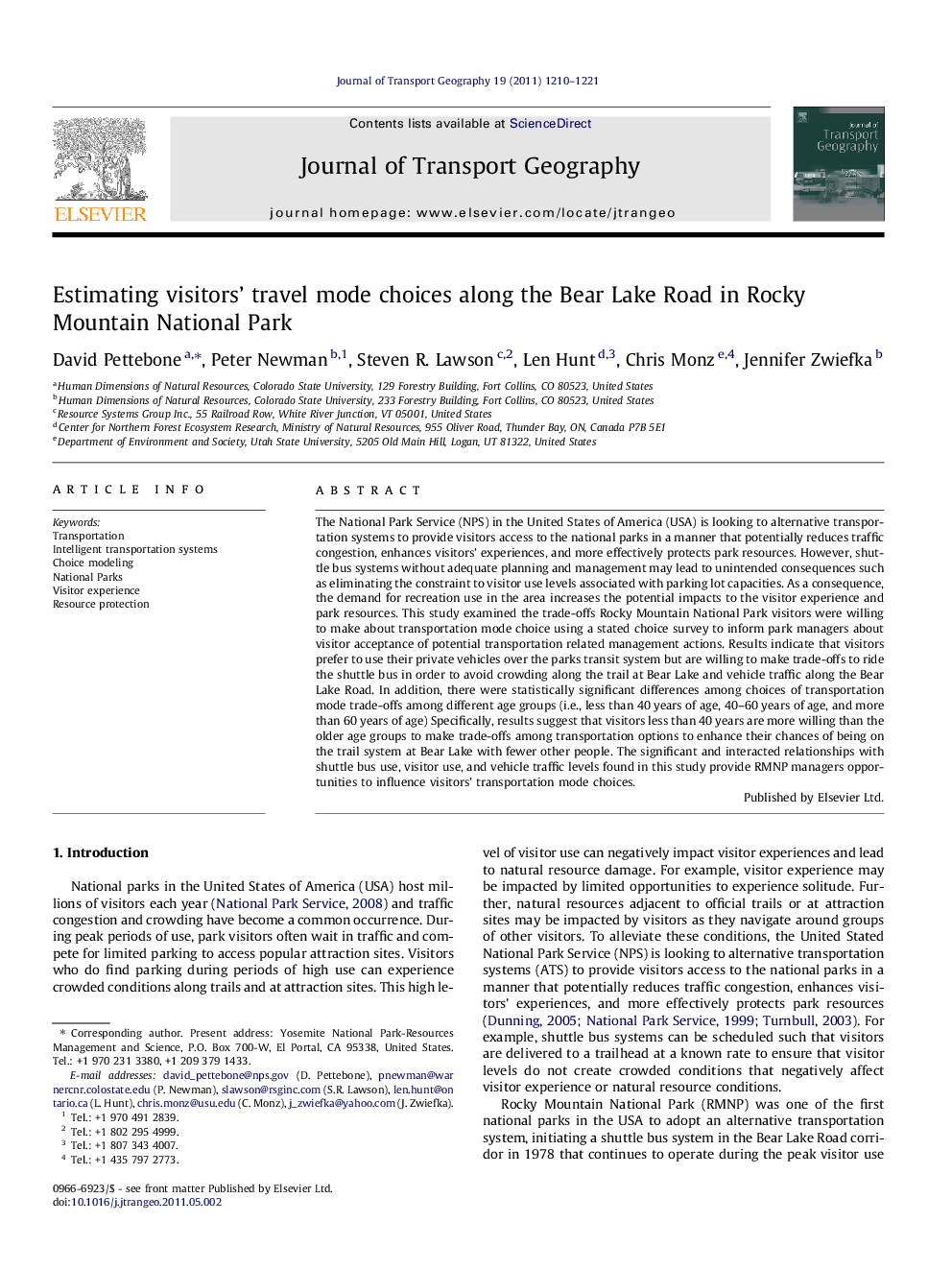| Article ID | Journal | Published Year | Pages | File Type |
|---|---|---|---|---|
| 1059571 | Journal of Transport Geography | 2011 | 12 Pages |
The National Park Service (NPS) in the United States of America (USA) is looking to alternative transportation systems to provide visitors access to the national parks in a manner that potentially reduces traffic congestion, enhances visitors’ experiences, and more effectively protects park resources. However, shuttle bus systems without adequate planning and management may lead to unintended consequences such as eliminating the constraint to visitor use levels associated with parking lot capacities. As a consequence, the demand for recreation use in the area increases the potential impacts to the visitor experience and park resources. This study examined the trade-offs Rocky Mountain National Park visitors were willing to make about transportation mode choice using a stated choice survey to inform park managers about visitor acceptance of potential transportation related management actions. Results indicate that visitors prefer to use their private vehicles over the parks transit system but are willing to make trade-offs to ride the shuttle bus in order to avoid crowding along the trail at Bear Lake and vehicle traffic along the Bear Lake Road. In addition, there were statistically significant differences among choices of transportation mode trade-offs among different age groups (i.e., less than 40 years of age, 40–60 years of age, and more than 60 years of age) Specifically, results suggest that visitors less than 40 years are more willing than the older age groups to make trade-offs among transportation options to enhance their chances of being on the trail system at Bear Lake with fewer other people. The significant and interacted relationships with shuttle bus use, visitor use, and vehicle traffic levels found in this study provide RMNP managers opportunities to influence visitors’ transportation mode choices.
► Overall, visitors prefer to use their private vehicles over the parks transit system. ► Visitors will make trade-offs to ride the shuttle bus in order to avoid vehicle traffic and crowding along the trail. ► Age was a significant variable explaining a visitor’s willingness to use alternative transportation. ► Younger visitors (i.e., <40 years) are most willing to use alternative transportation options to avoid trail crowding.
